LED Lights: Definition, How They Work, Types, Benefits & Applications

This fundamental difference delivers remarkable efficiency, using 75-80% less electricity than traditional bulbs while producing equivalent brightness. The benefits extend beyond energy savings: LEDs last 25-50 times longer than conventional bulbs, operate at cool temperatures, provide instant brightness, and offer precise control over color and dimming.
This comprehensive guide covers everything about LED technology—how it works, available types, benefits and limitations, and optimal applications. Whether upgrading home lighting or planning commercial installations, understanding LEDs helps you make informed decisions for efficient, sustainable illumination.
What Are LED Lights?
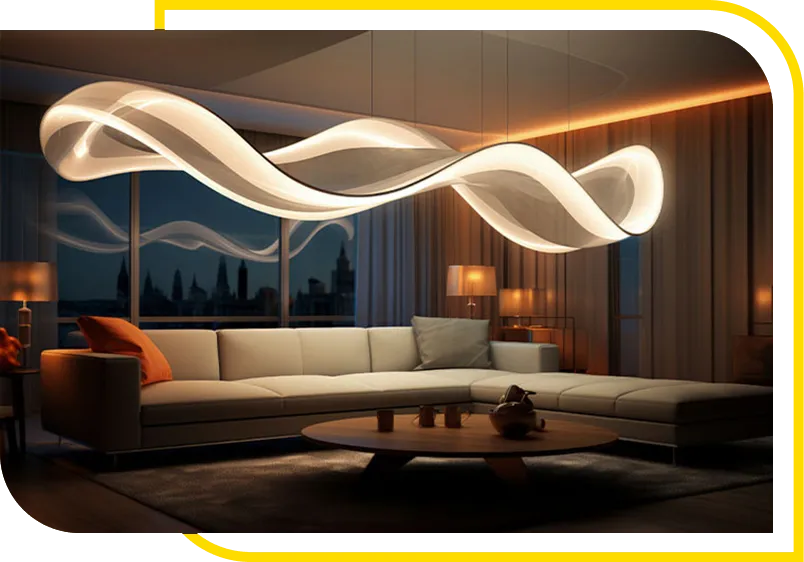
The technology works by passing electrical current through engineered semiconductor layers, causing electrons to move and release energy as photons (light particles). The specific semiconductor materials determine the light color, enabling LEDs to produce a wide spectrum of colors with precision.
LEDs are revolutionary due to their exceptional efficiency. While incandescent bulbs convert only 10% of energy into light (90% becomes heat), LEDs convert up to 95% of energy into light. This efficiency translates to lower electricity bills and reduced environmental impact.

What Does LED Light Stand For?
LED stands for “Light Emitting Diode.” Each part of this term explains how these devices work:
Light
Light refers to the visible electromagnetic radiation LEDs produce, specifically designed to maximize visible light output rather than heat or invisible radiation.
Emitting
Emitting describes how LEDs actively generate their own light when electrical current flows through semiconductor material, causing electrons to release photons.
Diode
Diode is the semiconductor component that allows current to flow in only one direction. This directional property ensures efficient energy conversion and enables precise control features like dimming and color changing.
This diode structure makes LEDs polarity-sensitive and instantly responsive, unlike traditional bulbs that require warm-up time.
Is LED a Conductor?
No, an LED is not a conductor in the traditional sense. It is a semiconductor device that allows current to flow in one direction and emits light when energized.
How Do LED Lights Work?
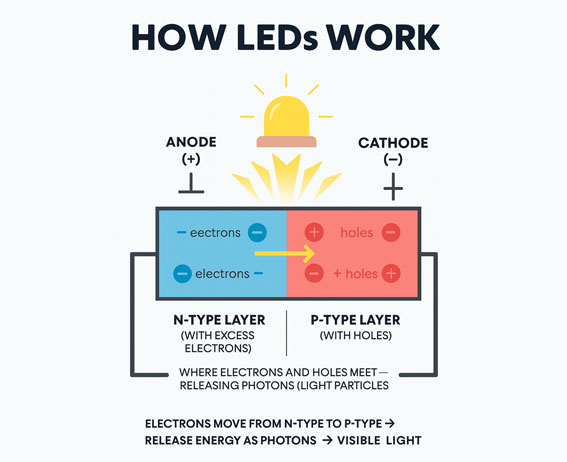
LED lights work through electroluminescence, where electrical energy converts directly into light without heat or moving parts. This process occurs within a semiconductor chip containing two layers:
- N-type layer — contains excess electrons
- P-type layer — contains electron “holes” or gaps
When electricity flows through the LED, electrons from the n-type layer combine with holes in the p-type layer, releasing energy as photons.


The Science Behind Electroluminescence

The wavelength (color) of light produced depends on the energy gap between the electron levels in the semiconductor material. Different semiconductor compounds create different energy gaps, which is why various materials produce different colors. Silicon carbide produces blue light, gallium arsenide produces red light, and gallium phosphide produces green light.
This quantum mechanical process occurs millions of times per second in a single LED, creating a steady stream of photons that we perceive as continuous light. The efficiency of this process depends on the quality of the semiconductor materials and the precision of the manufacturing process.
Key LED Components
Semiconductor chip
Core component where light generation occurs, typically measuring just a few millimeters square but containing millions of semiconductor junctions
Anode and cathode
Positive and negative terminals controlling current flow, with the anode connecting to the p-type layer and cathode to the n-type layer
Wire bonds
Ultra-thin gold or aluminum wires, typically 25-50 microns in diameter, that connect the LED chip to external circuits while maintaining reliability under thermal stress
Reflector cup
Directs light upward and outward from the chip, made from highly reflective materials like polished aluminum or white plastic to maximize light extraction efficiency
Phosphor coating
Converts blue LED light to white or other colors through photoluminescence, with different phosphor materials creating various color temperatures from warm white (2700K) to cool white (6500K)
Heat sink
Dissipates heat to maintain performance and longevity, typically made from aluminum or copper with fins or other structures to increase surface area for heat dissipation
Driver circuit
Regulates electrical current and converts AC to DC power, including components like resistors, capacitors, and integrated circuits that ensure stable operation and protect against voltage fluctuations
Encapsulant/Lens
Protects the LED chip from environmental damage while focusing or diffusing the light beam, made from transparent materials like epoxy resin or silicone that also help extract light efficiently from the semiconductor
How LEDs Produce Different Colors?
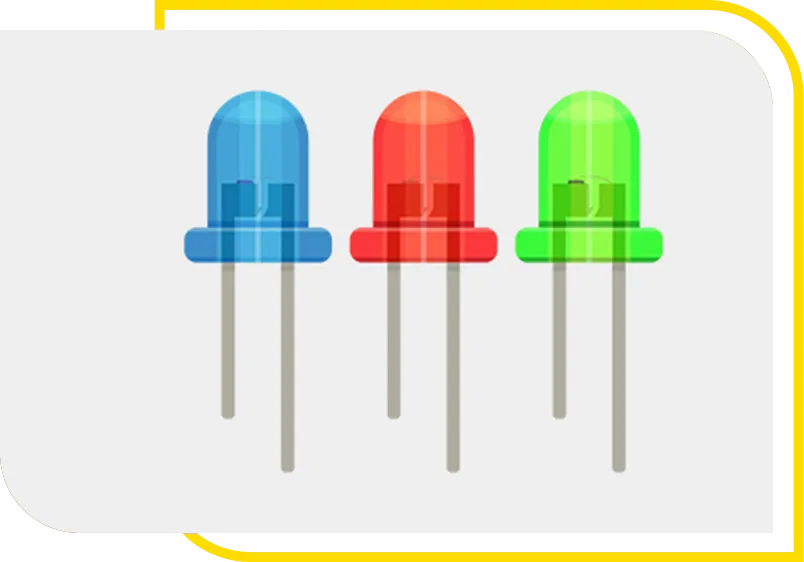
The color of LED light depends on the semiconductor materials used and the energy gap between electron levels. Different materials produce different wavelengths of light:
- Red LEDs — aluminum gallium arsenide (AlGaAs) with energy gap of approximately 1.8 eV
- Blue LEDs — gallium nitride (GaN) with energy gap of approximately 3.4 eV
- Green LEDs — gallium phosphide (GaP) with energy gap of approximately 2.2 eV

White Light Creation:
- Phosphor conversion — Blue LED chip coated with yellow phosphor that absorbs blue light and re-emits it as yellow light, combining with remaining blue light to create white
- RGB mixing — Red, green, and blue LEDs combined in precise ratios to produce white light, allowing for dynamic color temperature adjustment
The phosphor conversion method is more common in commercial LED lighting because it’s simpler and more cost-effective to manufacture. However, RGB mixing offers superior color control and can create any color in the visible spectrum, making it popular for decorative and specialty lighting applications.

How Much Electricity Does an LED Light Bulb Use?

LED light bulbs use 75-80% less electricity than incandescent bulbs while producing the same light output. This dramatic reduction in energy consumption stems from their fundamental efficiency advantage – LEDs convert electrical energy directly into light without the energy losses associated with heating filaments or exciting gas molecules.
Typical LED Wattage:
- Standard household bulb (60W equivalent) — 8-12 watts
- LED floodlight (75W equivalent) — 12-15 watts
- LED candelabra bulb (40W equivalent) — 4-6 watts
- LED tube light (32W fluorescent equivalent) — 15-18 watts
Example: A 10-watt LED bulb used 8 hours daily consumes 0.08 kWh per day, costing approximately $3.80 per year at average electricity rates of $0.13 per kWh.
What Determines the Quality of Light in LED Lighting?
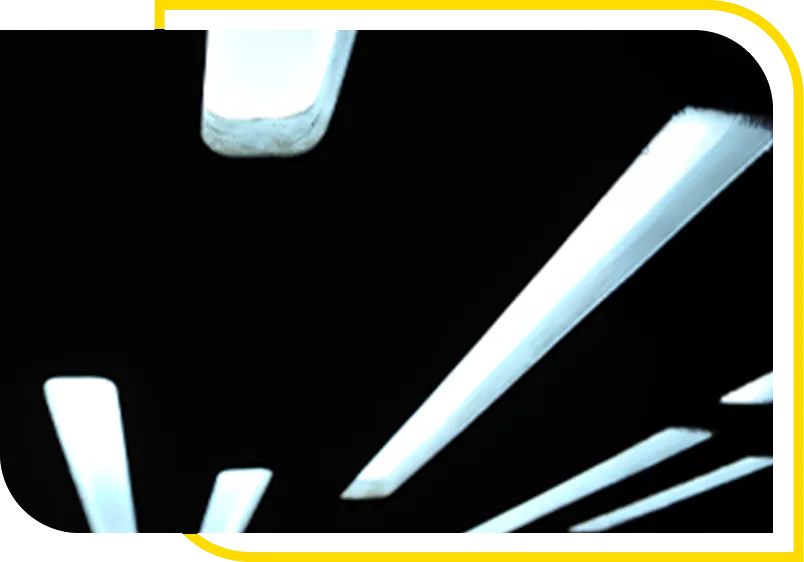
LED light quality depends on six key factors:
- color temperature (warmth/coolness)
- color rendering index (color accuracy)
- brightness uniformity
- light distribution
- flicker performance
- spectral quality

What Is Color Temperature (CCT) in LED Lighting?
Color Temperature, measured in Kelvins (K), describes the appearance of the light emitted by an LED. It ranges from warm yellow tones to cool blue tones:
- 2700K–3000K (Warm White): Soft, cozy light for bedrooms and living rooms
- 3500K–4100K (Neutral White): Balanced light ideal for kitchens and offices
- 5000K–6500K (Cool White/Daylight): Bright, bluish light used for task lighting and garages
Choosing the right CCT helps create the desired ambiance and functionality in any space.
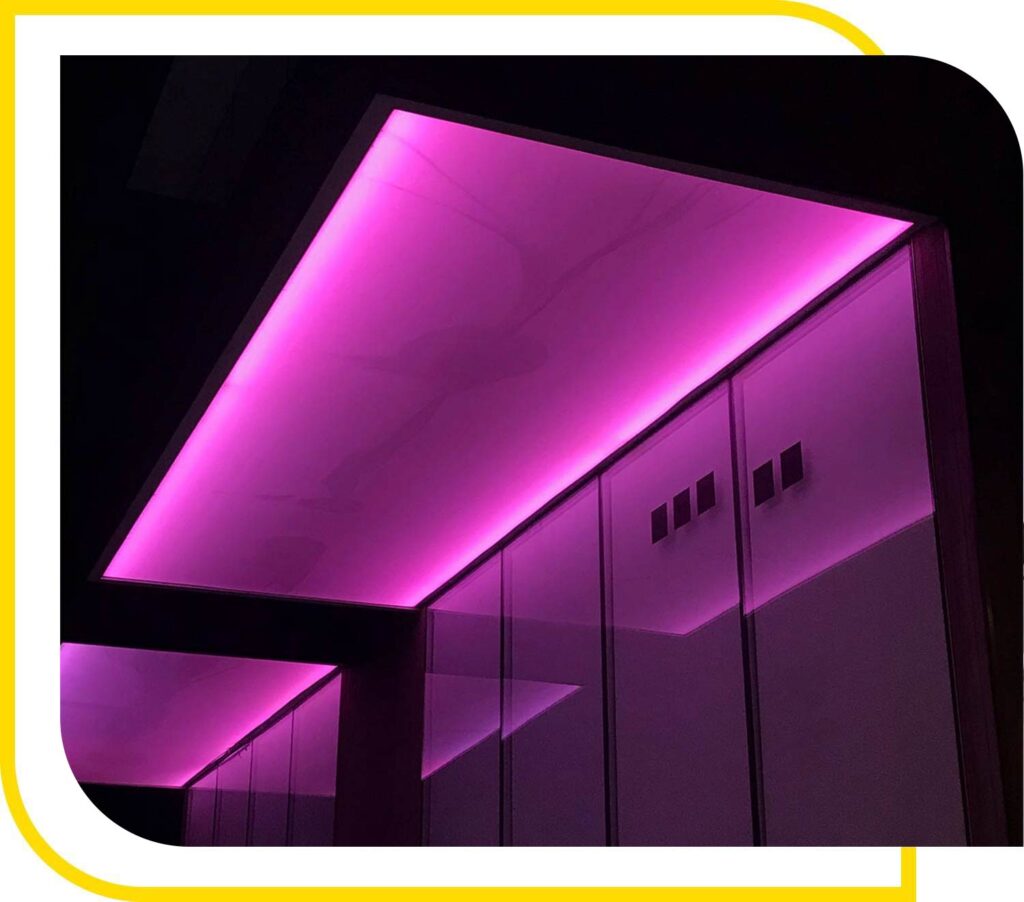
What Is CRI (Color Rendering Index) in LED Lighting?

CRI measures how accurately a light source reveals the true colors of objects compared to natural daylight. It is scored on a scale from 0 to 100.
- CRI > 80: Suitable for most general-purpose lighting
- CRI > 90: Recommended for color-critical environments like art studios, retail stores, and photography setups
A higher CRI ensures colors appear vibrant and natural under LED lighting.
How Does Brightness Work in LED Lights?

LED brightness is measured in lumens, not watts. Lumens indicate the amount of visible light emitted by the bulb. The higher the lumens, the brighter the light. This shift from watts (which measure energy usage) to lumens (which measure light output) helps users choose lighting based on performance, not just power consumption.
Can LED Lights Be Dimmed?
Yes, many LED lights are dimmable, but they must be labeled as such and used with compatible dimmer switches. Dimming LEDs not only creates flexible lighting moods but also helps save energy and extend the lifespan of the bulbs.

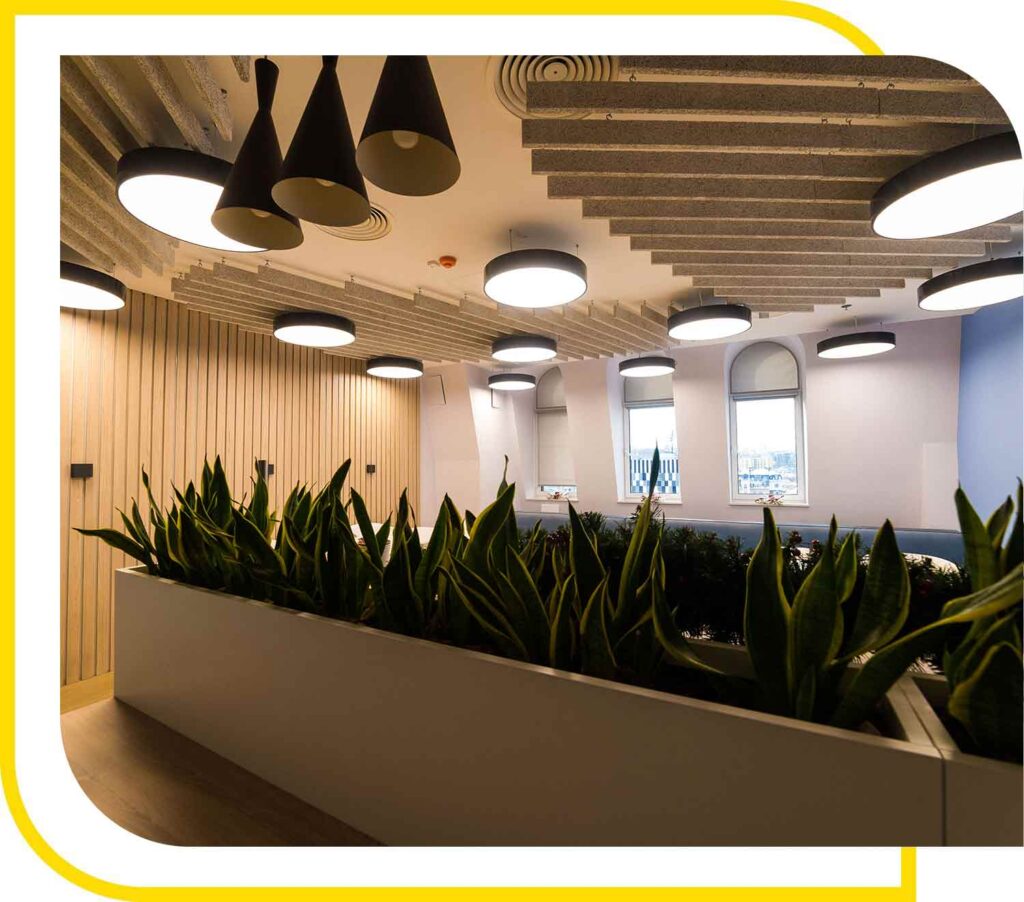
What Is Light Distribution in LED Fixtures?

Light distribution refers to how light spreads from an LED source:
- Directional LEDs: Focus light in one direction — ideal for spotlights, track lights, and task lighting
- Omnidirectional LEDs: Emit light in all directions — suitable for lamps, ceiling fixtures, and general room lighting
Choosing the correct distribution pattern ensures efficient and purposeful lighting in any space.
What Is Flicker Index in LED Lighting?
The Flicker Index measures the intensity and speed of flickering in a light source. While some flicker is not visible to the eye, it can cause eye strain, headaches, and fatigue over time.
For sensitive environments like offices, schools, or homes, it’s best to choose flicker-free or low-flicker LED products for better comfort and health.
How LEDs Differ from Incandescent, Fluorescent, and Halogen Bulbs?
LEDs operate on fundamentally different principles compared to traditional lighting technologies. While incandescent bulbs generate light by heating a tungsten filament until it glows, LEDs use electroluminescence—where electrical current moves through a semiconductor and releases energy as photons. This difference drives major improvements in energy use, lifespan, and performance.
Comparison Factor | Incandescent | Halogen | Fluorescent | LED |
Technology | Heated tungsten filament | Improved incandescent + halogen gas | Electric discharge through mercury vapor | Electroluminescence through semiconductors |
Energy Efficiency | 10% light, 90% heat | 15% light, 85% heat | 25% light, 75% heat | 80-90% light, minimal heat |
Average Lifespan | 1,000 hours | 2,000-3,000 hours | 8,000-10,000 hours | 25,000-50,000 hours |
Operating Temperature | Hot to touch | Very hot to touch | Warm operation | Cool to touch |
Startup Time | Instant | Instant | Slow warm-up/flickering | Instant |
Color Temperature Range | 2700K (warm only) | 3000K (bright white only) | Limited options | 2700K-6500K+ (full spectrum) |
Color Rendering | Excellent | Excellent | Good (improved modern) | Excellent |
Dimming Performance | Smooth | Good | Poor (needs special ballast) | Excellent with LED dimmers |
Smart Features | None | None | None | WiFi, Bluetooth, color-changing |
Hazardous Materials | None | None | Mercury (special disposal) | None |
Fire Risk | High (hot operation) | Very high (very hot) | Low | Very low |
UV Emission | Some | Some | Some | Minimal |
Initial Cost | $1 per bulb | $3-4 per bulb | $5-8 per bulb | $8-12 per bulb |
Bulbs Needed (25,000 hrs) | 25 bulbs | 12-17 bulbs | 3-5 bulbs | 1 bulb |
Energy Cost (25,000 hrs) | $180 | $135 | $72 | $36 |
Total Cost (25,000 hrs) | $205 | $171-186 | $87-97 | $44 |
Replacement Frequency | 25x more than LED | 12-17x more than LED | 3-5x more than LED | Baseline (least frequent) |
Retrofit Compatibility | Standard screw base | Standard screw base | May require ballast removal | Most fit existing fixtures |
Environmental Impact | High (frequent replacement) | High (frequent replacement) | Moderate (mercury + replacements) | Low (long lifespan, no toxins) |
Heat Generation Impact | Increases cooling costs | Significantly increases cooling costs | Slightly increases cooling costs | Reduces cooling costs |
Failure Pattern | Sudden burnout | Sudden burnout | Gradual dimming | Gradual dimming (no sudden failure) |
Maintenance Requirements | Frequent replacement | Frequent replacement | Moderate replacement | Minimal maintenance |
What Are The Types of LED Lights?
The types of LED lights are listed below, each designed for specific applications and lighting needs, helping you choose the right solution for your home, office, or commercial space.
Standard LED Bulbs

Standard LED bulbs replace traditional incandescent and fluorescent bulbs in everyday fixtures. These bulbs fit into common household sockets and provide the same warm or cool light you’re used to, but with significantly lower energy consumption. A typical LED bulb uses 75% less energy than an incandescent bulb while lasting 25 times longer.

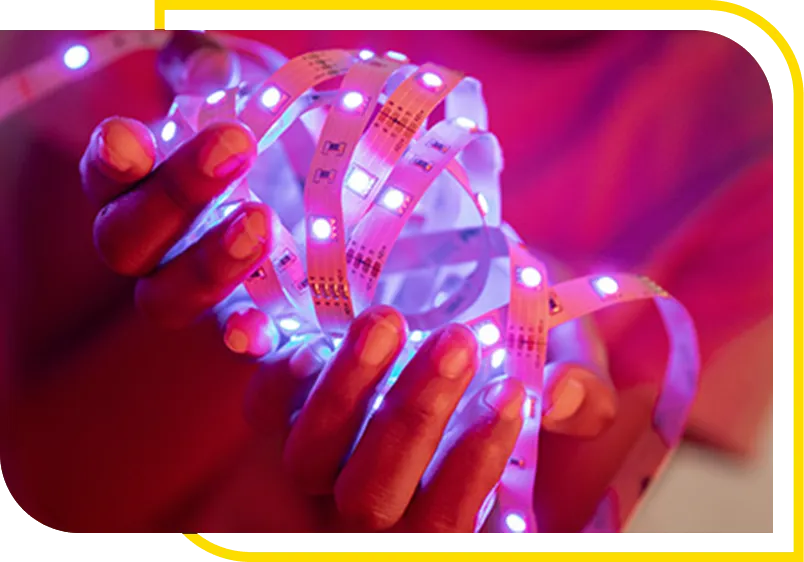
LED Strip Lights

LED strip lights consist of multiple small LEDs mounted on a flexible circuit board. These strips can be cut to custom lengths and installed in tight spaces where traditional bulbs won’t fit. They’re perfect for under-cabinet lighting, accent lighting behind TVs, or creating ambient lighting in bedrooms and living rooms.
LED Spotlights and Floodlights
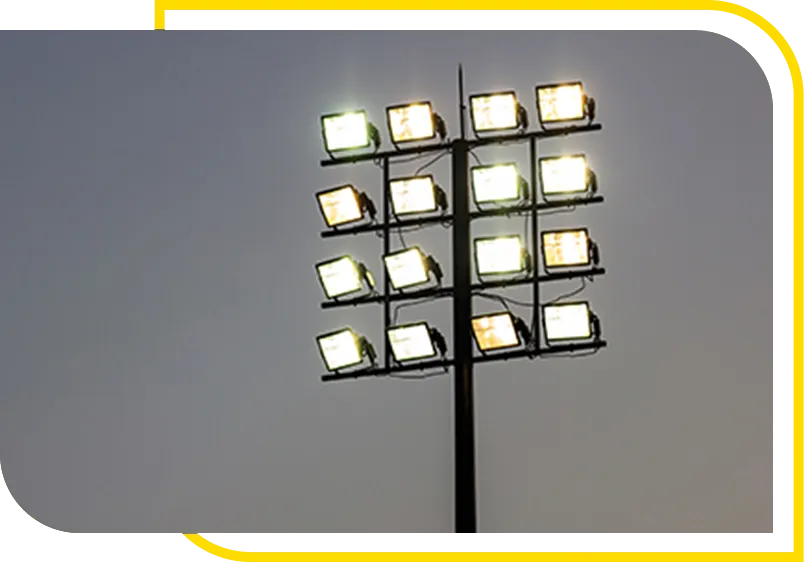
LED spotlights produce focused beams of light, making them ideal for highlighting artwork, architectural features, or specific areas in your yard. LED floodlights cast wide beams that illuminate large outdoor areas like driveways, parking lots, or sports fields. Both types offer excellent energy efficiency compared to halogen alternatives.


LED Panel Lights

LED panel lights feature a flat, rectangular design that provides even, diffused lighting across large areas. These panels commonly replace fluorescent ceiling fixtures in offices, schools, and commercial buildings. They deliver consistent illumination without the flickering or humming associated with older fluorescent systems.
Smart LED Lights

Smart LED lights connect to your home’s Wi-Fi network, allowing you to control them through smartphone apps or voice assistants. You can adjust brightness, change colors, set schedules, and create lighting scenes. Smart LEDs offer convenience and energy savings by automatically adjusting to your daily routines.


Decorative LED Lights

Decorative LED lights prioritize aesthetics alongside functionality. This category includes Edison-style LED bulbs with visible filaments, colored LEDs for mood lighting, and specialty shapes like candle or globe bulbs. These lights enhance your home’s ambiance while maintaining LED efficiency.
High-Bay LED Lights
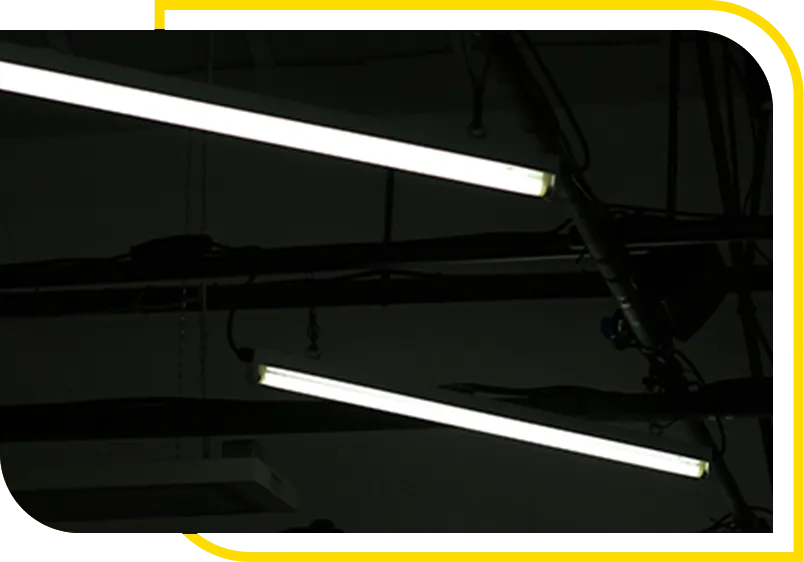
High-bay LED lights illuminate large spaces with high ceilings, typically 20 feet or higher. Warehouses, gymnasiums, and manufacturing facilities rely on these powerful LEDs to provide adequate lighting for safety and productivity. They replace metal halide or high-pressure sodium fixtures with superior energy efficiency.


LED Grow Lights

LED grow lights emit specific wavelengths of light that plants need for photosynthesis. Indoor gardeners and commercial growers use these specialized LEDs to cultivate plants year-round. Modern LED grow lights can be tuned to provide optimal light spectrums for different growth stages.
Each type of LED light serves specific purposes and environments, but all share the common benefits of energy efficiency, long lifespan, and reduced environmental impact compared to traditional lighting technologies.
What Are The Benefits of LED Lights?
LED lights transform how we illuminate spaces through superior energy efficiency, extended lifespan, and reduced environmental impact. These advanced lighting solutions deliver immediate and long-term advantages for homes, businesses, and public facilities.
Energy Efficiency and Cost Savings

The superior energy conversion directly reduces electricity bills and decreases power grid demand. Most LED bulbs recover their higher purchase price within 6-12 months through lower energy costs and reduced replacement needs.

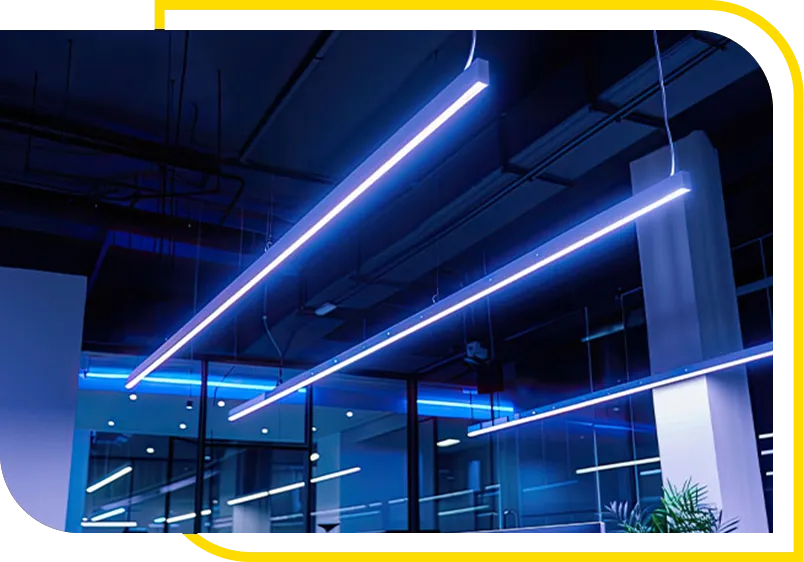
Extended Lifespan and Durability

LED construction resists shock, vibration, and temperature changes better than fragile filament bulbs. No glass components or delicate parts make LEDs perfect for outdoor applications, vehicles, and high-traffic areas.
Environmental and Health Benefits
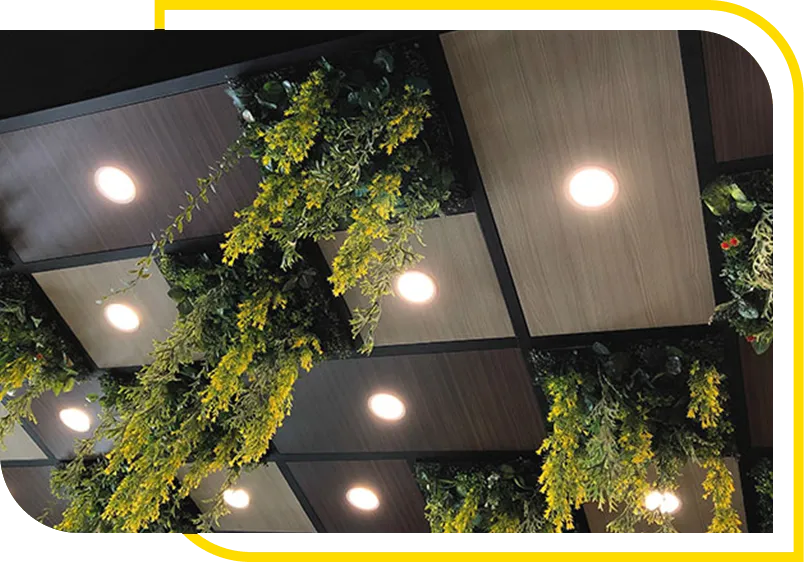
LED lights generate very little heat, reducing air conditioning costs and burn risks. You can safely touch LED bulbs even after extended operation.

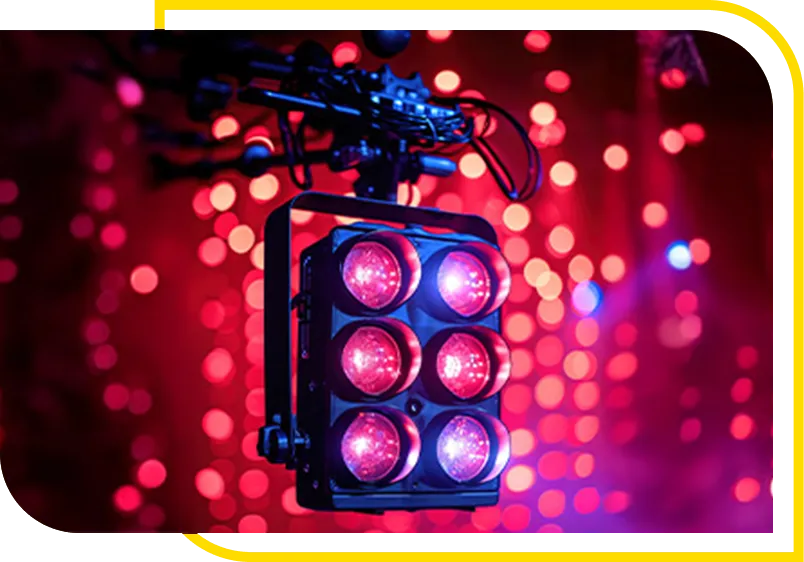
Performance Advantages

LED lights reach full brightness instantly without warm-up time. They operate silently without buzzing or humming sounds common in fluorescent fixtures. Cold weather actually improves LED performance, making them ideal for outdoor winter lighting and refrigerated displays.
Design and Control Flexibility
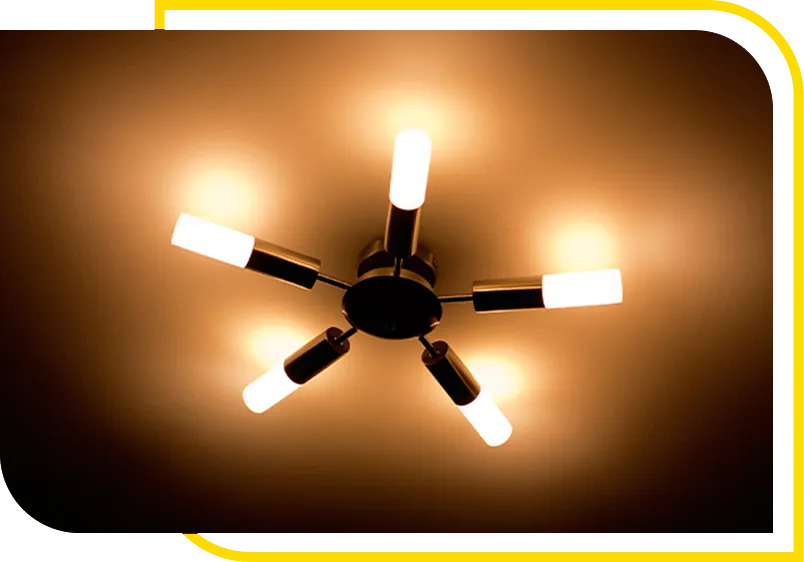
LED lights naturally produce specific colors without filters, making colored lighting more efficient. Precise light direction control reduces unwanted light spillage and improves illumination quality.


Applications and Versatility

The combination of energy savings, extended lifespan, environmental benefits, and superior performance makes LED lights the smart choice for virtually any lighting application.
What Are Disadvantages of LED Lights?

While LED lighting offers many benefits, it also comes with some drawbacks to consider:
- Higher Upfront Cost
Quality LEDs cost more initially than incandescent or fluorescent bulbs, especially when replacing multiple fixtures. - Heat Sensitivity
LEDs are sensitive to high temperatures, which can shorten their lifespan in poorly ventilated or enclosed fixtures. - Dimming Issues
Not all LEDs work with traditional dimmer switches. You may need compatible dimmable LEDs and modern dimmers to avoid flickering or buzzing. - Color Accuracy
Some LEDs struggle to replicate the warm glow of incandescent lights, though this has improved with newer models. - Directional Light Output
LEDs emit focused light, which may lead to uneven distribution in certain lamps or fixtures without special design. - Blue Light Exposure
Cool-colored LEDs emit more blue light, which can cause eye strain or disrupt sleep patterns if used at night.

Are LED lights safe for human health?
LED lights are generally safe for human health when used properly. However, some concerns exist regarding blue light exposure affecting sleep patterns and potential eye strain from poor-quality LEDs or excessive brightness in certain applications.
Where to Use LED Lights?
LED lights are versatile and used across residential, commercial, and industrial settings:
Residential
- Living Rooms & Bedrooms: Warm white LEDs (2700K–3000K) for cozy, relaxing ambiance.
- Kitchens & Bathrooms: Neutral to cool white LEDs (3500K–4000K) for bright, accurate lighting.
- Outdoor & Garage Areas: Weatherproof and motion-activated LEDs for safety and visibility.
Commercial
- Retail & Hospitality: High-CRI, dimmable LEDs for attractive product displays and ambient atmosphere.
- Offices & Schools: Flicker-free LEDs that support focus and reduce eye strain.
- Healthcare: High-quality LEDs with accurate color rendering for medical precision.
Industrial
- Warehouses & Factories: High-bay, durable LEDs for large spaces and task lighting.
- Cold Storage & Parking Garages: LEDs that perform well in extreme temperatures and reduce maintenance.
Specialty
- Art Galleries & Studios: UV-free, high-CRI LEDs for delicate or color-critical tasks.
- Grow Lights & Automotive: LEDs for plant growth efficiency and long-lasting vehicle lighting.
